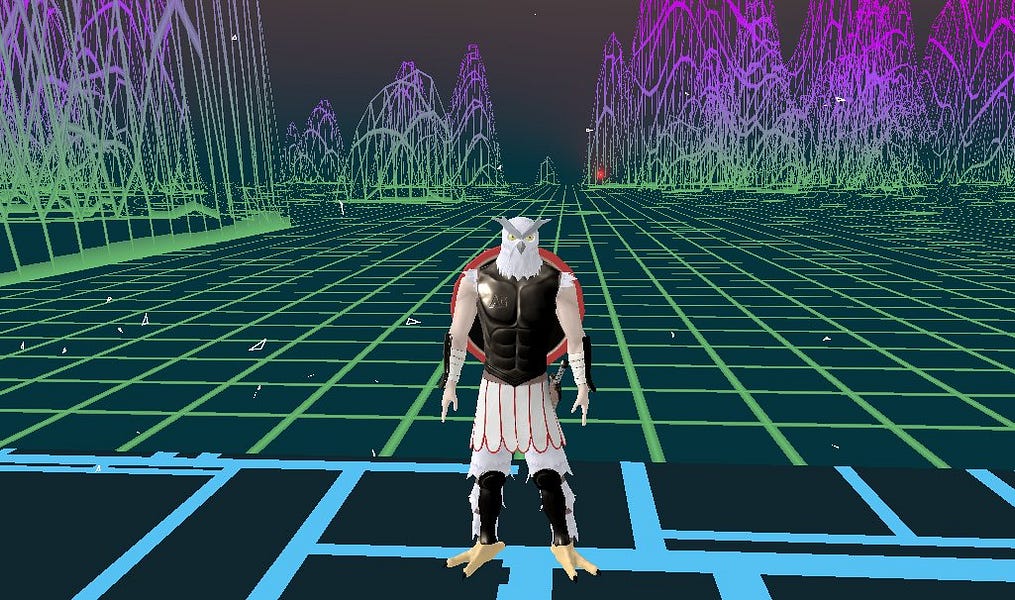Dear Bankless Nation,
This week, Fortnite creators Epic Games announced $2B in new funding earmarked for the studio’s metaverse plans, and Facebook parent firm Meta said it would charge creators 47.5% on sales made through its Horizon Worlds virtual reality platform.
These are just some of the latest examples of how the biggest companies in the world are continuing to put their own designs in place for the metaverse.
In the face of these rising metaversal great powers, can us rebels on the ground in Web3 and beyond actualize an effective open metaverse that’s firstly for the people and not mainly for shareholders?
The answer is yes! And better yet, there’s already a general blueprint for making an open metaverse a reality, so let’s walk through what the five main elements of this blueprint are for today’s write-up.
-WMP
The 5 pillars of an open metaverse
A single virtual reality domain, like Fortnite, is a virtual world.
A cluster of culturally or economically linked virtual worlds is a metagalaxy, e.g. Ethereum’s rising VR projects.
Then the totality of metagalaxies makes up the metaverse, i.e. a universe of VR spaces set to become increasingly interconnected and intertraversable as time goes on.
A mature metaverse as I’ve described above doesn’t exist yet. We’ve gotten a bunch of virtual worlds and some metagalaxies so far, but a great deal of work still lies ahead when it comes to actualizing a true metaverse.
That said, the ultimate fate of the metaverse is being forged in the here and the now. A growing number of people are rightfully concerned that major companies like Meta are going to invade and dominate our virtual lives with rent-centric, closed garden models.
Accordingly, now’s our cue for doubling down on an open metaverse that’s vital and empowering for regular people first and foremost. What will this take, though? One of my favorite VR and metaverse experts is jin, and he recently laid out in succinct fashion what I’m going to call “the five pillars of an open metaverse” going forward:
Embracing all of these elements is necessary because “just NFTs + virtual worlds” won’t be enough to build a successful open metaverse, as jin went on to note in the same thread. Below, I’ll expound a bit more on each of these five pillars and how they fit into the bigger picture.
1) Freedom of expression
In the heart of every human is a yearning for self-expression. And just as we thrive on freedom of expression in our day-to-day lives, we’ll want to express ourselves freely in the metaverse too.
Customizable avatars and customizable virtual worlds will accordingly prove key for freedom of expression in an open metaverse going forward. For example, contemporary projects that have open-source servers and fully customizable avatars include JanusXR, Vircadia, Webaverse, and XREngine.
2) Freedom of transaction
The metaverse needs neutral infrastructure for payments so people can effectively transact therein. Ethereum is the most decentralized and neutral infrastructure for digital payments in existence today, so it’s a prime contender here. Add layer-two (L2) scaling solutions and the efficiency and security of proof-of-stake (PoS) into the mix, and Ethereum is well poised to be the leading infra for guaranteeing the freedom to transact IRL and metaversally for years to come.
3) Open interoperability
A sea of siloed corporate worlds does not a metaverse make. The answer to this potential bastardization is to make a metaverse that thrives on open standards and open-source technologies. With regard to media, Ethereum NFTs and the Interplanetary File System (IPFS) are examples of promising open tech. There’s also lots of amazing efforts to consider outside of the Web3 ecosystem proper, like VRM, an open file format for 3D avatars, and WebXR, a series of standards for powering VR content on browsers. Continue to meld all these open innovations together, and things will start to get very metaversal in no time.
4) Right of exit

Want to move your content, e.g. customized avatars, to a different platform? In an open metaverse it should be inexpensive and relatively easy to make such migrations, and we’ll see this become increasingly possible over time. If a project intentionally siloes assets and discourages you from portaling elsewhere, it’s working in its own interests and not the interests of the open metaverse.
5) Strong privacy guarantees
Meta and other mainstream behemoths will harvest as much data as they possibly can through their siloed VR activities. Those of us fighting for the open metaverse need to counter by building toward and supporting foundational privacy guarantees, like the ability to self-host servers. If we can ensure our own metaversal spaces outside of mainstream panopticons, we can be freer. And that’s the grand point, after all.
Action steps
- 👀 Check out the Awesome Metaverse repository
- ✍️ Read my previous write-up What’s new in cryptoart
